Arizona’s landscape is rich with prehistoric wonders. One of the most fascinating is the Crane Petroglyph Heritage Site near Sedona. Previously called V Bar V Ranch, this site holds one of the best-preserved collections of petroglyphs in the Verde Valley. These rock carvings are both significant and awe-inspiring. But what makes this site so special, and why should it be on your must-visit list? Read on!
Disclosure: This post contains affiliate links. If you buy something from one of our affiliates, we receive a small commission at no extra charge to you. Thanks for helping to keep our blog up and running!
Table of Contents
All the Reasons Why You Should Visit the Crane Petroglyph Heritage Site
The Crane Petroglyph Heritage Site is renowned for its collection of ancient rock art. It is the largest known petroglyph site in the Verde Valley of central Arizona, and one of the best-preserved.
The petroglyphs at the site date back to the Sinagua people, who lived in the region between 600 and 1450 AD. Over 1,000 petroglyphs are carved into the sandstone. These carvings feature a wide range of symbols. Many remain a mystery, but experts believe they relate to religious ceremonies, agricultural markers, and celestial observations.
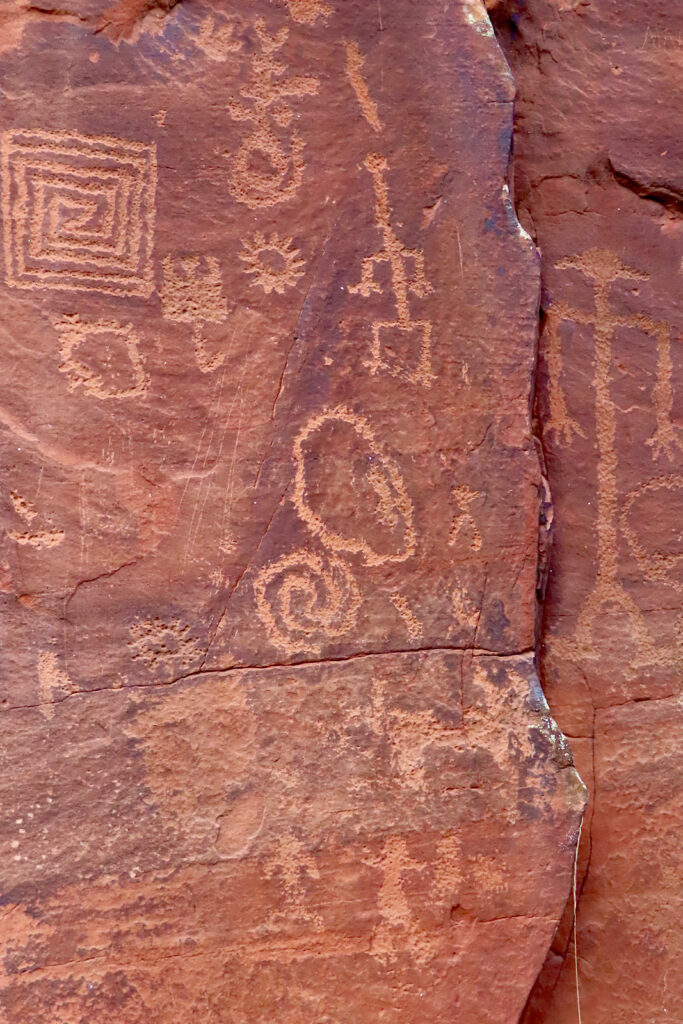
What sets Crane Petroglyphs apart from other sites in Arizona is the sheer scale and clarity of the carvings. The site’s location in the Beaver Creek area has protected the petroglyphs from erosion. Their location on a private ranch has helped protect them from vandalism. The clear, precise images don’t overlap. All these factors come together to make them one of the best-preserved examples of prehistoric art in the region.
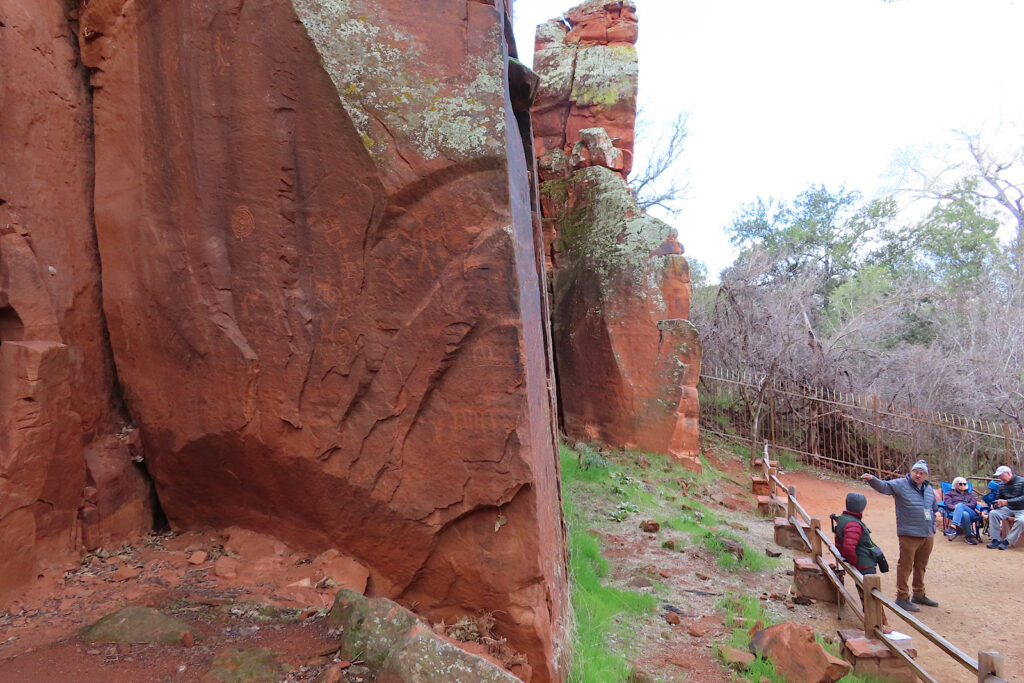
From V Bar V Ranch to Crane Petroglyph Heritage Site: A Name Change
This site was previously known as Historic V Bar V Ranch. It was primarily recognized for its association with early ranching history in Arizona. However, as interest in its archaeological significance grew, the site was renamed. Crane Petroglyph Heritage Site reflects the importance of the petroglyphs and their cultural value.
The name change promotes greater awareness of the ancient heritage preserved here. The switch from a ranching narrative to one focused on indigenous history emphasizes the site’s archaeological importance. It invites visitors to learn more about Arizona’s prehistoric cultures.
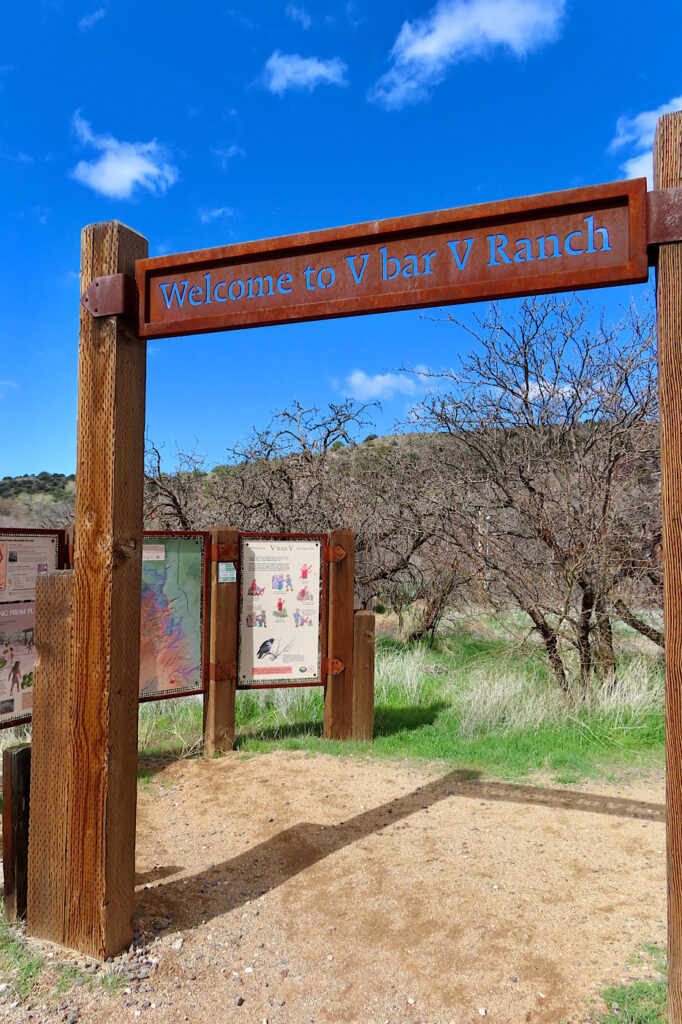
Heritage Site Timeline
1150 – Petroglyph creation begins at the sandstone cliff on Wet Beaver Creek.
1400 – Tuzigoot, Montezuma Castle, and the Crane Petroglyph Site are abandoned.
1900 – Benjamin and Florence Taylor homestead the property, branding cattle “100” and calling the ranch “100 Place.”
1908 – Taylors sell the property.
1908–1927 – Ownership changes multiple times, including the Dickinson and Babbitt families.
1927 – James and Ida May Minotto, with partners, buy 100 Place and surrounding ranches, forming the V Bar V Cattle Company.
1938 – Marcus Lawrence buys V Bar V but is murdered; Bruce Brockett, who managed the ranch, gains ownership and builds a ranch house with the “V Bar V” marked in stone.
1938–1985 – V Bar V changes hands several times until Ben Zink buys it.
1994 – Zink trades the original ranch to the U.S. Forest Service; volunteers provide tours and management.
2024 – The site officially becomes the Crane Petroglyph Heritage Site on March 16th.
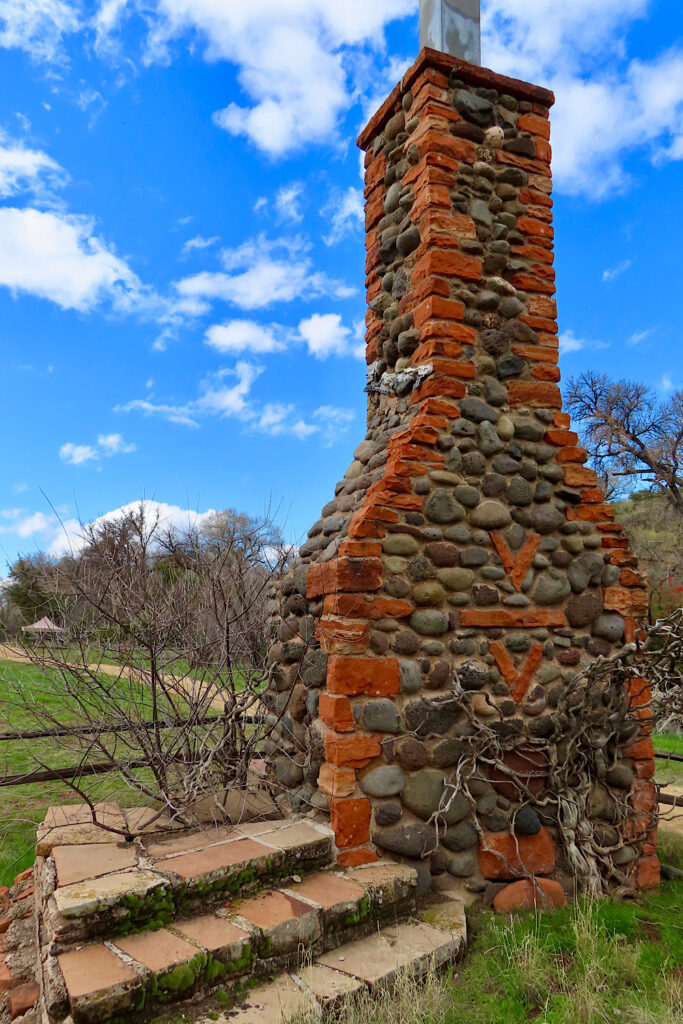
Visiting the Heritage Site: What Can You See and Do?
The Crane Petroglyph Heritage Site offers a unique opportunity to immerse yourself in history. As you explore the area, you’ll encounter an extensive rock wall covered with petroglyphs. Some carvings are clearly recognizable as animals or humans, while others are abstract and open to interpretation. The site features interpretive signs to help visitors understand the symbols and their possible meanings.
Guided tours are available, led by knowledgeable volunteers who explain the history of the site, its significance, and the Beaver Creek rock art style. These tours are highly recommended for those interested in a deeper understanding of the petroglyphs and the Sinagua culture.
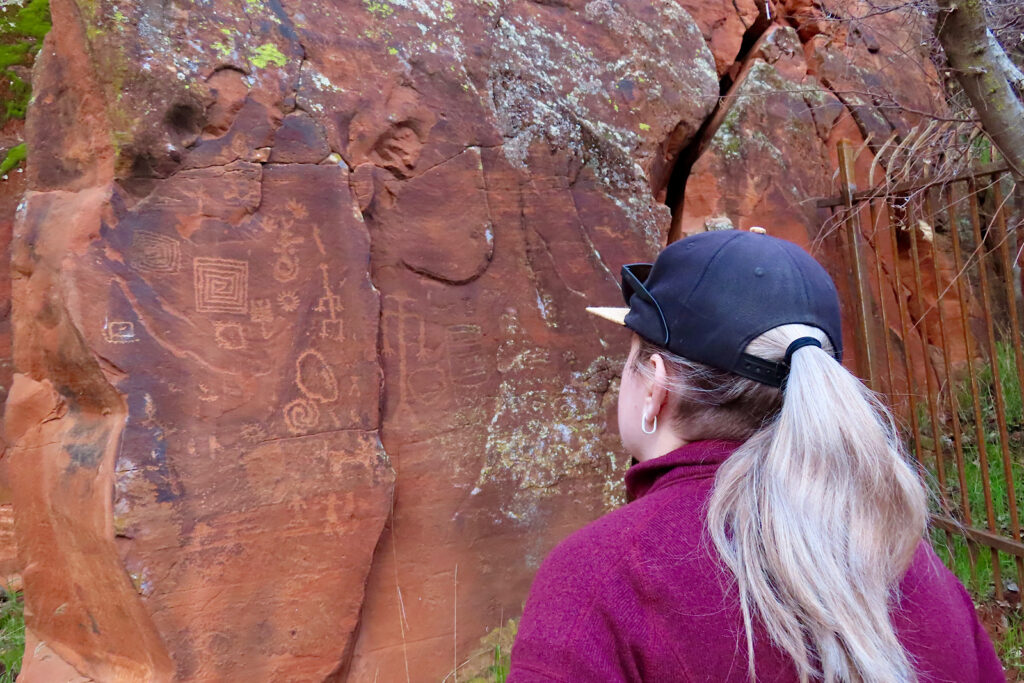
Beyond the petroglyphs, the site also has a visitor center that provides educational displays about the region’s indigenous history and archaeology. Visitors can learn about the Sinagua’s farming practices, trade networks, and daily life through the exhibits.
We camped at Dead Horse Ranch State Park and did this as part of a day trip outing from camp.
What is the Beaver Creek Rock Art Style?
The Crane Petroglyph Heritage Site features 1,032 petroglyphs spread across 13 panels along Wet Beaver Creek. Unusually, all the petroglyphs belong to a single style—Beaver Creek Style. In contrast, most petroglyphs sites in the Verde Valley display multiple rock art styles, including those of the Sinagua, Archaic, Yavapai, Apache, and more recent historic carvings.
The Beaver Creek style appears throughout the eastern half of Arizona’s Verde Valley, reflecting the Southern Sinagua culture, which thrived between A.D. 1150 and 1400.
When you visit the Crane Petroglyphs site, docents point out key features in the rock art. Animals, birds, and snakes figure prominently. Many of the images occur in pairs. Symbols seen here may represent clans, boundary markings, or cultural activities such as ceremonies and hunting.
Some figures, such as those emerging from cracks in the rocks and diving or upside-down shapes, reflect the practice of shamanism, which experts believe played a key role in Sinagua religious beliefs.
This rock art also aligns with the spring and autumn equinoxes as well as the winter and summer solstices. By observing how sunlight moved across the carvings, the Sinagua people in the Verde Valley could determine when to plant, harvest, or begin ceremonies.
Love exploring petroglyph sites? Check out Utah’s Nine Mile Canyon!
Archaeology Days at the Crane Petroglyph Heritage Site
The first time we explored V Bar V Ranch Historic Site, we visited during Archaeology Days. Before 2020, this annual event usually took place in March. Our daughter, not yet a teenager at the time, enjoyed hands-on activities like flint knapping.
The experience left such a lasting impression that when she and her husband visited us “snowbirds” in March 2024, we knew we had to take them back to the site.
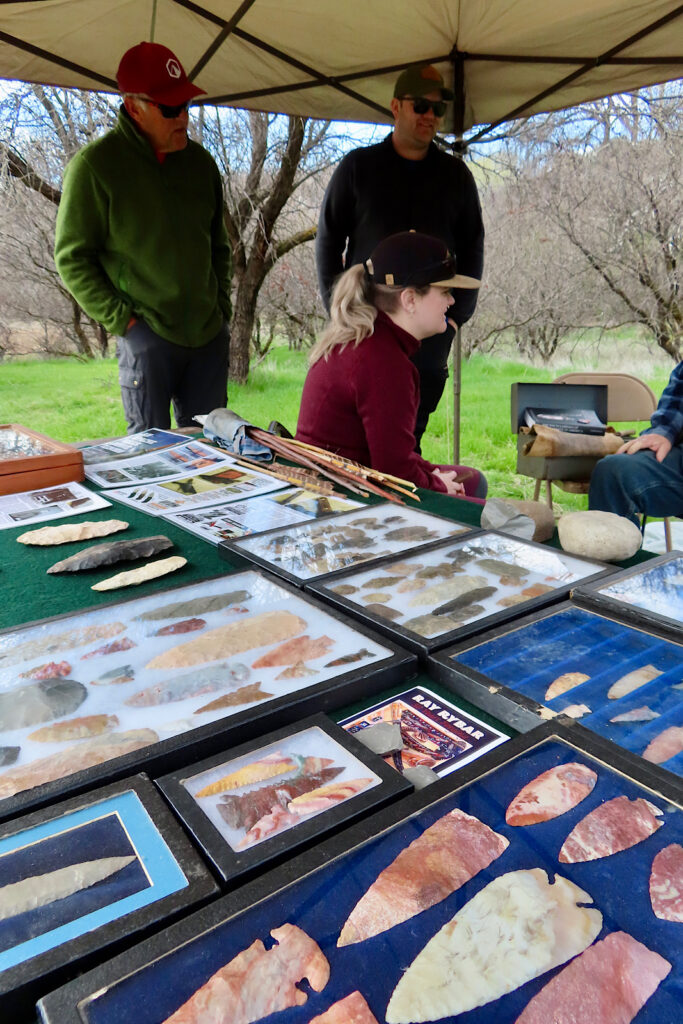
As luck would have it, we chose to visit on the very weekend that Beaver Creek Heritage Days was celebrating Arizona Archaeology and Heritage Awareness Month and methods of Indigenous technologies at the Crane Petroglyph Heritage Site for the first time since the Pandemic.
We had opportunities to throw an atlatl (an ancient hunting tool used by the Sinagua to propel spears with greater force and accuracy), learn flintknapping techniques to make spear points, learn about prehistoric weaving styles and techniques, and create small clay pinch pots.
Experience this Heritage Site
The Crane Petroglyph Heritage Site is not just a collection of ancient rock art—it’s a portal to a distant past, offering a rare opportunity to connect with the indigenous history of Arizona. Whether you’re a history enthusiast, archaeology buff, or simply love exploring the outdoors, this heritage site near Sedona promises a memorable experience that brings Arizona’s rich cultural heritage to life.
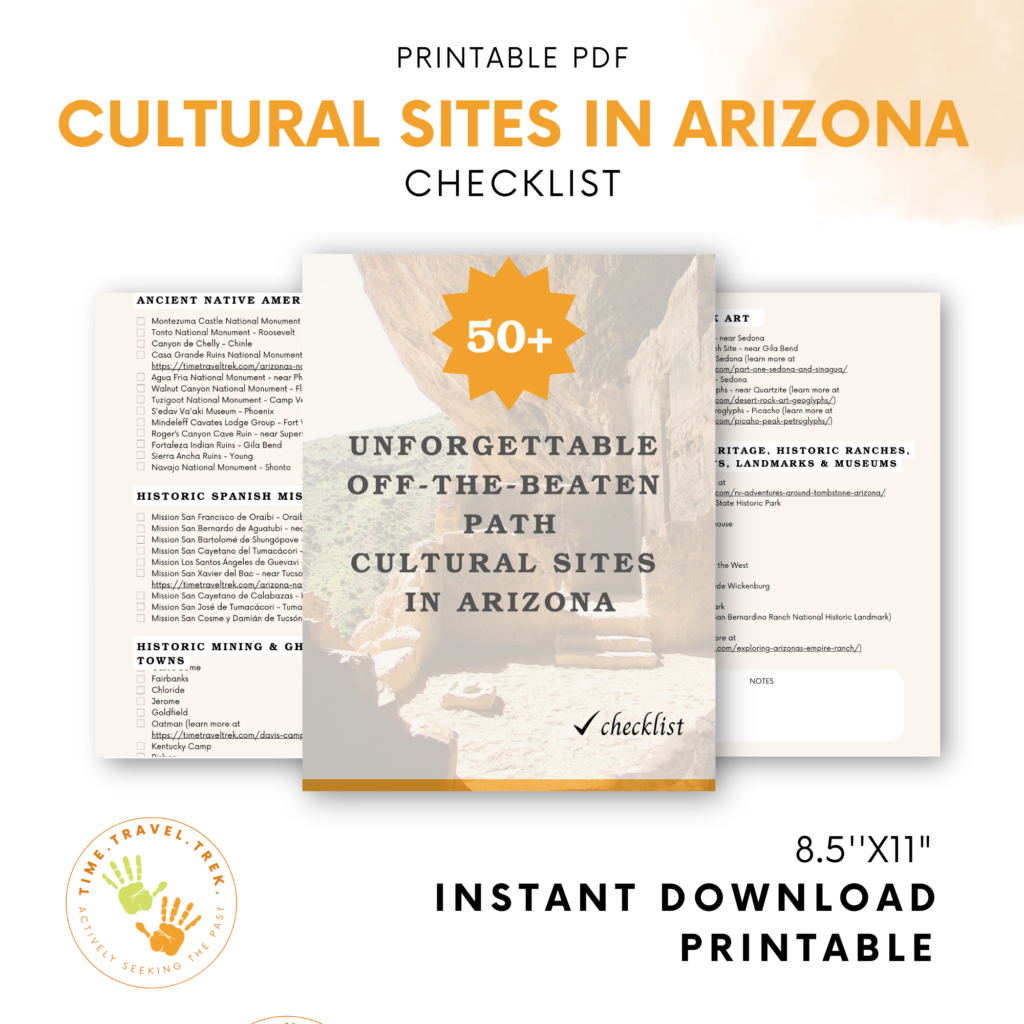
If you like cultural sites like Crane Petroglyphs Heritage Site, you’ll love our checklist of cultural sites in Arizona – now available in our Etsy printables shop.
When You Go
If you’re planning a visit to the Crane Petroglyph Heritage Site, here are a few tips and resources to help make your trip more enjoyable:
- Location: The site is located approximately 30 minutes south of Sedona. From the junction of I-17 and SR 179, drive 2.8 miles miles (4.5 km) east on Forest Road 618. Watch for the entrance on the right, about ½ mile (0.8 km) past the Beaver Creek Day-Use Picnic Area.
- Hours and Fees: Be sure to check the USDA Forest Service page for current hours of operation before arriving. A Red Rock Pass or America the Beautiful Pass is required.
- Nearby Sites: If you’re interested in Arizona’s ancient history, don’t miss nearby attractions like these:
Montezuma Castle National Monument
Palatki Heritage Site
Honanki Heritage Site
Tuzigoot National Monument - Books of Interest: For those who want to dive deeper, check out books such as:
Ancient Peoples of the American Southwest
Ancient Verde Valley Family Life: The Sinagua at the Dyck Cliff Dwelling
Sinagua Sunwatchers: An Archaeoastronomy Survey of the V Bar V Heritage Site and the Sacred Mountain Basin.
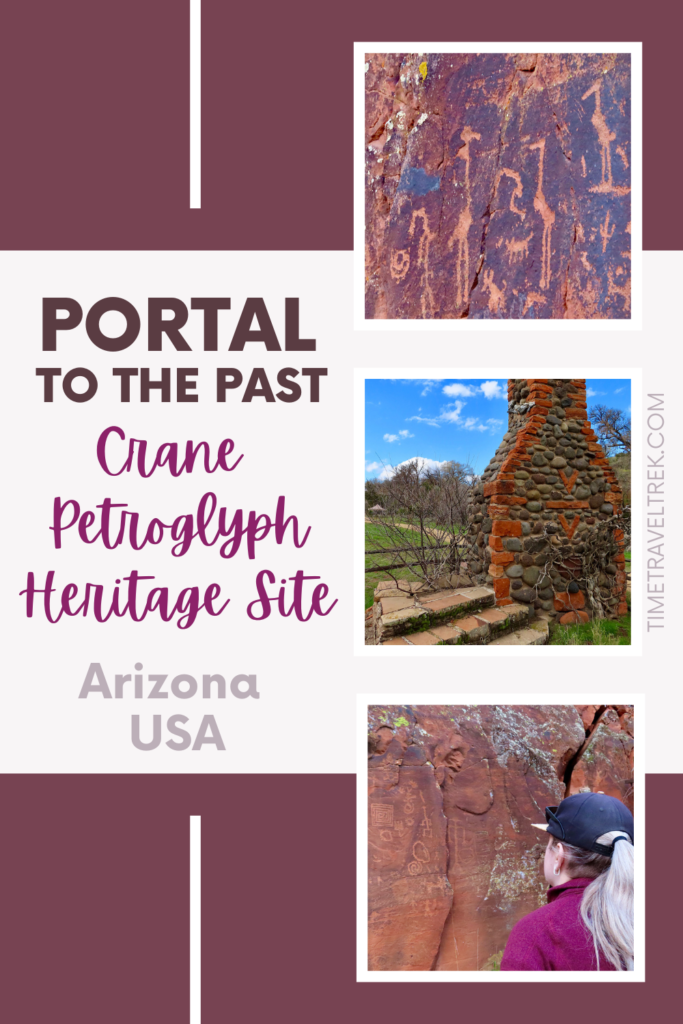
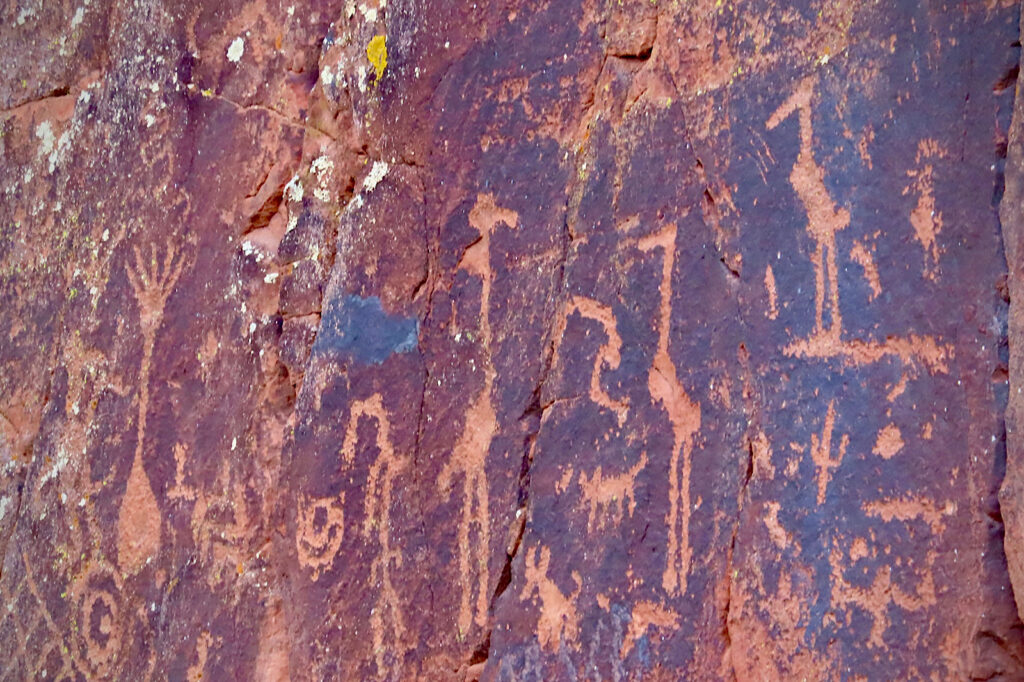
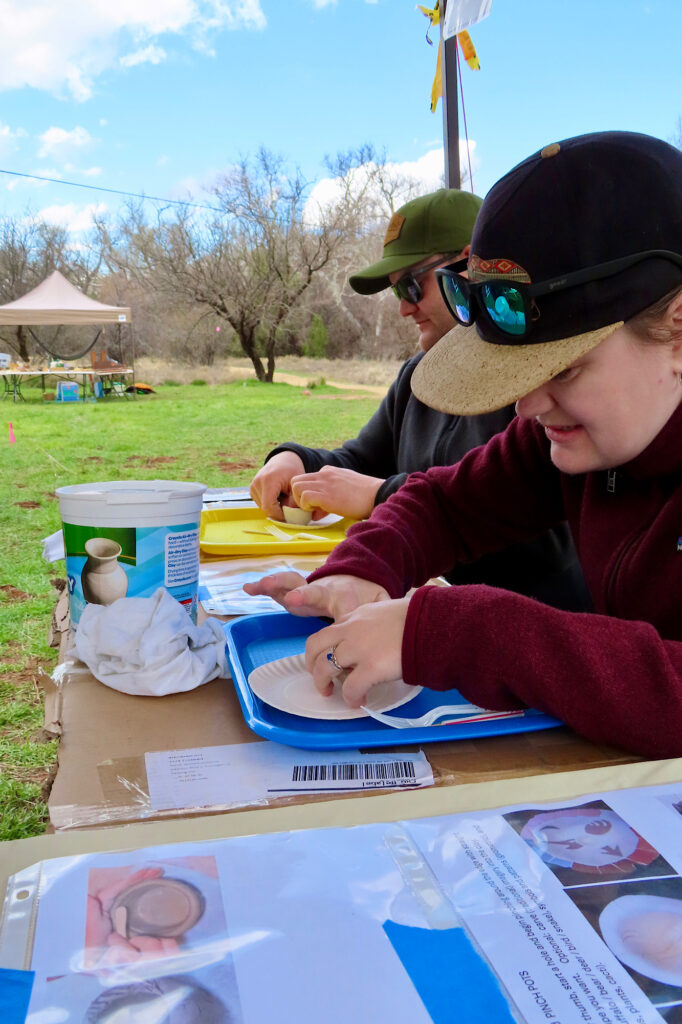
Leave a Reply